The abrogation of Article 370, nearly two years back, effectively marked the end of Kashmir’s special status. Indeed, this was nothing short of a revolution. It unleashed a series of sweeping changes, ushering in an era of tectonic transformation and a decisive strategic shift in India’s approach towards security matters, democratic emancipation of millions of citizens living as stateless orphans without voting rights. It gave a major jolt to the deeply entrenched ecosystem of terrorism, separatism, and radicalisation thriving on drug money, killings and threats. The old order is slowly but decisively collapsing, despite putting up a desperate resistance. Today, one witnesses a plethora of developments heralding the ‘New Kashmir’.
In the month of June three significant developments that merit serious attention, have taken place in Kashmir. These are suggestive of trends that will shape the destiny of Kashmir in the near- and long-term future. The first and foremost is PM Modi’s 24th June meeting with the all-parties delegation of Kashmir.1 The event in itself is a major break from the past for the reasons which are more than evident to any Kashmir watcher. It is for the first time that NC, PDP and People’s Conference, all Valley-based political parties, came together on a common platform with more or less a uniform objective to end the political deadlock and begin the political process in the UT of Jammu and Kashmir. Indeed, the regional leaders and their cadres deserve appreciation for leaving aside the bitter memories of discomfort and humiliation that they underwent during their extended preventive and precautionary detention after August 5th, 2019.2 It may be recalled that virtually all the senior political leaders were put under house arrest on August 5th as precautionary measures to ensure violence free landing of the historic Kashmir. As part of detention, they were denied physical and electronic access to the outside world. They faced many other hardships too. However, the stringent measures had to be taken to ensure the safety and security of the common masses in the erstwhile state of J&K. It is indeed praiseworthy gesture on the part of the regional leaders to have set aside those memories and readily agree to come to meet the PM in the hope of early revival of political activities in the erstwhile state and in the hope of setting in motion the process of elections and eventual restoration of the status of a full-fledged State of Jammu & Kashmir.
Understandably, there were disagreements during the meeting, but there was no display of acrimony and grudges in public. Differences did come out in the open around some core issues like the restoration of the statehood and holding of elections in that order rather than the reverse proposed approach of delimitation followed by elections and then restoration of Statehood. Yet, analysts agree that resumption of constructive political debate was indicative of the State’s commitment to vibrant democracy like in the rest of the country, with respect for diversity and difference.
The central government had assured to restore the statehood and conduct elections. However, it is just a matter of time now and that too, largely for national security concerns. In Kashmir, the old order that thrived on religious extremism and militancy is dying a slow death. However, it still poses a significant security challenge. Hence, Jammu and Kashmir needs special attention and focus to deal with these challenges to security and radicalisation. Without addressing those challenges, it is not possible to lay the foundations of a vibrant, functional and well-meaning democracy in Jammu and Kashmir.
At the current juncture the UT urgently requires the strengthening of local government institutions at the Panchayat and block development levels. The Panchayat elections before the abrogation of article 370 and Block Development Council (BDC) elections after abrogation witnessed massive participation which makes it evidently clear that the old order primarily defined the dominant narrative of militancy had taken its toll on development and democracy which generated deep-rooted popular angst and frustration with the regional political leaders and political parties. The regional political parties also showed enthusiasm for the District Development Council (DDC) elections. The successful DDC elections also played a crucial role in breaking the political deadlock. However, given the past record of bureaucracy having tremendous powers in Kashmir, the local self-governing bodies need to be empowered and the exercise requires a consistent, determined and sustained effort.
Another crucial requirement to lay robust democracy in the Naya Kashmir is the delimitation exercise that too has started. The political ‘imbalance’ between Jammu and Kashmir regions, electorally tilted in favour of the Valley has been a cause a lot of heart burn and resentment in the Jammu region and intensified the complexities of the conflict region. Hence, to make a new beginning delimitation needs to be completed in a time-bound manner to address the political disparity between the two regions. But more than that the delimitation process has to be completed before the elections to grant voting rights to the long de-franchised people who have for long been treated by the erstwhile state as non-subjects and virtually stateless, not only denied voting rights in State elections down to the Panchayat level but also deprived of other benefits enjoyed by the state subjects. Thousands and thousands of these migrants and refugees have now been registered as state subjects and their names have to be included in the electoral rolls. Hence, the Central government is insistent on the delimitation process to precede the elections; a basic democratic requirement, strangely objected to by local political parties that are apprehensive of losing the electoral advantages they have traditionally enjoyed.
The regional political parties can render all the possible support in the initiatives mentioned above and in effect expedite the holding of elections followed by eventual restoration of statehood. Both these measures significantly depend on creating the healthy socio-cultural and political milieu for democracy.
Last but not least, to strengthen the democratic foundations in Kashmir, the bureaucracy and its working style needs major reforms. They have to get rid of their feudal ways and treat the DDCs with dignity and honour, and do their best to empower them. The people should be made to feel perceptible changes in governance and development on the ground.
Despite the positives mentioned above as far as the response of the political parties is concerned, it also merits a serious mention they hardly seem to have learnt any lesson, even after losing credibility and ground support of the people. Kashmir’s ex-CM and PDP Chief Mahbooba Mufti, after the all-party-meeting, advised the government to talk to Pakistan.3 This seemed so out of sync with the general mood in the Valley. She has failed to realise that Pakistan is no longer seen by the people of Kashmir as their saviour. Pakistan’s role in promoting and sustaining militancy is now common knowledge. Yet, Ms Mufti has failed to read that message and repeatedly keeps calling for talks with Pakistan. In addition, her insistence on restoration of Art. 370 as a precondition for political dialogue/elections etc. has few takers. Most recently, she criticised the sacking of Syed Salahuddin’s relatives from the government service after NIA found them involved in terror funding, a case of conspiracy against Kashmir.4
It appears that such leaders refuse to learn anything from the past mistakes. The common masses have discredited them because they sold false dreams of ‘azadi’ by displaying their dubious loyalties, encouraging stone-pelters by the display of public sympathy for their wrong and anti-national cause and their involvement in massive corruption and bad governance.
The public resentment was clearly evident in the fact that the common masses did not protest when the mainstream political leaders were arrested after the abrogation of Article 370. But, these leaders intend to continue with their old ways. However, it’s too late as the old order is collapsing fast and if they want to keep themselves politically relevant, they have to speak truth to the people, act in a genuine and honest manner and shed their dubious loyalties. They have to condemn terrorist elements, their sponsor Pakistan, stone-pelters and extremist/separatist groups in categorical terms, without mincing the words.
Likewise, Hurriyat also appears to be returning to its old ways. It had given strike calls for 8th July (which marks the death anniversary of slain HM commander Burhan Wani) and 13th July (martyrs day) and a week-long shut down from 8th to 13th July. 5 Having lost support and credibility after it was exposed as a group of opportunists who sold false azadi dreams, embezzled money, sent their kith and kin to safe and secure government jobs and foreign universities, incited common Kashmiris to join militancy and indulge in stone-pelting and thrived on bribes paid by foreign intelligence agencies, it went into a quasi-hibernation after the abrogation of Article 370. Further NIA crackdown on terror finances, ban on LoC trade, Jamaat-i-Islami and arrest of APHC leaders in terror funding also gave a severe jolt to the Hurriyat. Last year, its stalwart SAS Geelani resigned from APHC having lost his following in Kashmir and Pakistan both (for failing to mobilise people after August 5th 2019).6 However, it seems to be trying desperately to regain its lost status.
Ms. Mufti’s statements and Hurriyat’s attempts at resurgence need to be analysed from the prism of national security. What they speak and intend to do indicates the strengthening of separatist and extremist Jamaat-i-Islami (JI), their core support base, in the rural areas in Kashmir. Reportedly, after the ban on the Jamaat, their cadres dispersed in rural areas and strengthened themselves. The government seems to have failed to take the action against Jamaat to its logical conclusion. The Jamaat ban turned out to be an ad hoc and random counter terror measure. The outfits like Jamaat are expert in eluding the official ban, go into hibernation and re-consolidate themselves. This is exactly what JI did in Kashmir. They changed their style. They stopped roaming around with Islamic appearances and continued their work secretly. Reportedly, they have developed networks with Turkey and Muslim brotherhood.7 It seems that in the future they will play a major role in creating unrest and in intensifying militancy. Particularly, after the Taliban takes over power in Afghanistan, overall situation will be highly congenial for extremist and separatist elements in Kashmir. If Pakistan decides to divert Taliban fighters who already have ties with Jaish and LeT, to Kashmir, India’s security challenges may exacerbate.
In addition to the above, militants are changing the technology in Kashmir’s sub-conventional war. Most recently, the drone attack on Jammu air force base has shocked everyone.8 It did come as a big surprise to many though the authorities would have surely anticipated its possibility. Drones were in active use since 2019 in dropping weapons, drugs and cash in Punjab and Jammu border.9 The use of drones to attack a civilian or military facility was just a matter of time.
(Detailed analyses of the use of drones in Kashmir and future security predictions were discussed in my article written for the Usanas Foundation in Nov. 2020.10)
This is the part of the overall transition in technology. Due to NIA crackdown on terror funding, ban on LoC trade and LoC fencing, it has become extremely challenging for the Pak sponsors to smuggle in weapons, terrorists and cash at the scale practised earlier. After Pulwama suicide bombing, and the Indian retaliation at Balakot, the Jaish infiltration channels in Samba-Kathua region have been considerably squeezed. As a result, the terrorist groups are finding new ways to infiltrate, smuggle weapons and communicate.
This trend is likely to continue in future. The terror groups may continue to surprise us with new innovations in weapon technologies and infiltration methods. They are even likely to use advanced wifi-operated IEDs, sticky bombs, chemical weapons, advanced drones to drop explosives at civilian and military installations and even on moving targets.
It may be recalled that Turkish drones proved to be a game-changer in Armenia-Azerbaijan war. Turkey’s strategic proximity with Pakistan and its support to various global jihadist groups, hardly need any elaboration. It is highly likely that India’s adversaries like China and Turkey will assist Pakistan with sophisticated drone technology which it can supply it to Kashmir-centric terror groups. This will also help Pakistan the much-needed deniability, particularly at a time when the terror funding investigation is still on.
Apart from this, India should also be ready to deal with more intense operations resulting out of possible strengthening of ties between Kashmir-centric terror groups and the transnational Terror Groups like Taliban, ISKP and Al Qaeda, including the accompanying high-intensity information war against India. Our adversaries are not likely to leave any stone unturned to delay if not deny the attainment of Prime Minister’s vision of a New Kashmir.
Endnotes
- ANI, “PM Modi's All-Party Meet with J-K Leaders Concludes,” June 24, 2021, https://www.aninews.in/news/national/general-news/pm-modis-all-party-meet-with-j-k-leaders-concludes20210624185556/.
- Rifat Fareed, “Key Kashmir Political Leaders Arrested by India since August 5,” Al Jazeera, August 17, 2019, https://www.aljazeera.com/news/2019/8/17/key-kashmir-political-leaders-arrested-by-india-since-august-5.
- “Mehbooba Mufti Asks India To Talk To Pakistan,” Brut., June 23, 2021, https://www.brut.media/in/international/mehbooba-mufti-asks-india-to-talk-to-pakistan-99b9dbe5-588f-4b40-ac26-3a9f53dc4c01.
- Sunil Bhat, “J&K: Mehbooba Mufti Questions Sacking of Hizbul Mujahideen Chief Salahuddin's Sons from Govt Jobs,” India Today, July 12, 2021, https://www.indiatoday.in/india/story/mehbooba-mufti-jammu-kashmir-hizbul-mujahideen-chief-syed-salahuddin-sons-sacked-1827114-2021-07-12.
- Rakesh K Singh, “All Party Hurriyat Conference Calls for Week Long Commemoration Programme,” The Pioneer, July 7, 2021, https://www.dailypioneer.com/2021/india/all-party-hurriyat-conference-calls-for-week-long-commemoration-programme.html.
- “Separatist Leader Syed Ali Shah Geelani Resigns from All Party Hurriyat Conference,” DNA India, June 29, 2020, https://www.dnaindia.com/india/report-separatist-leader-syed-ali-shah-geelani-resigns-from-all-party-hurriyat-conference-2830069.
- Abhinav Pandya, “Erdogan's Kashmir Activism Stems From Islamist Ambitions,” Swarajyamag, February 10, 2021, https://swarajyamag.com/politics/erdogans-kashmir-activism-stems-from-islamist-ambitions.
- Kamaljit Kaur Sandhu, “IAF Station in Jammu Gets Anti-Drone System, Jammers Days after Attack on Air Base,” India Today, June 30, 2021, https://www.indiatoday.in/india/jammu-and-kashmir/story/iaf-station-jammu-anti-drone-system-attack-air-base-1821186-2021-06-30.
- Jitendra Bahadur Singh, “Pakistan Dropped Weapons via Drones in Punjab: Intelligence Agencies,” India Today, October 10, 2019, https://www.indiatoday.in/india/story/pak-state-actors-behind-drone-weapon-dropping-incidents-in-punjab-intelligence-agencies-1608026-2019-10-10.
- “Is Pakistan Arming the Kashmir-Centric Terrorist Groups with Turkish Drones?,” Usanas Foundation, April 11, 2021, https://usanasfoundation.com/is-pakistan-arming-the-kashmir-centric-terrorist-groups-with-turkish-drones.
(The paper is the author’s individual scholastic articulation. The author certifies that the article/paper is original in content, unpublished and it has not been submitted for publication/web upload elsewhere, and that the facts and figures quoted are duly referenced, as needed, and are believed to be correct). (The paper does not necessarily represent the organisational stance... More >>
Image Source: https://i.ytimg.com/vi/NoYMGSBb9Mg/hqdefault.jpg

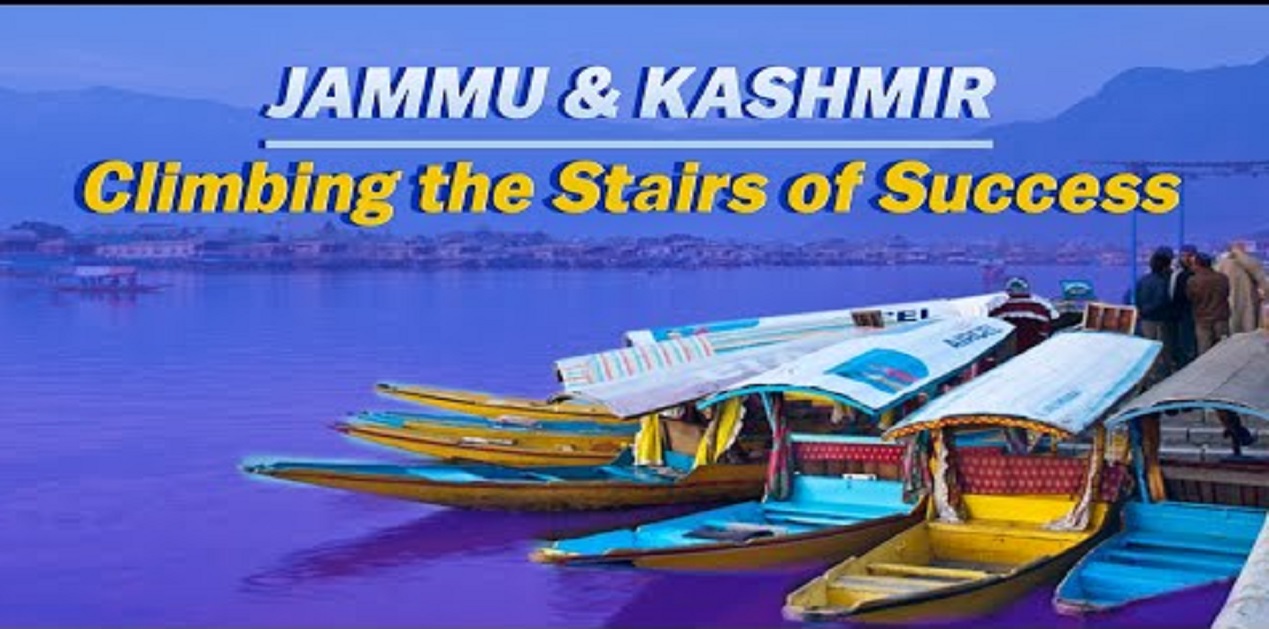
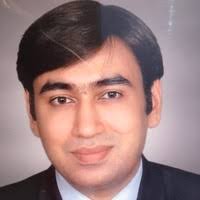
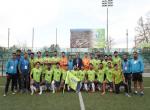
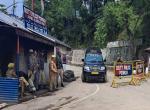


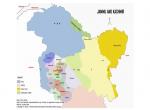
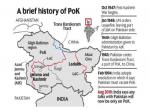

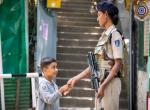
Post new comment